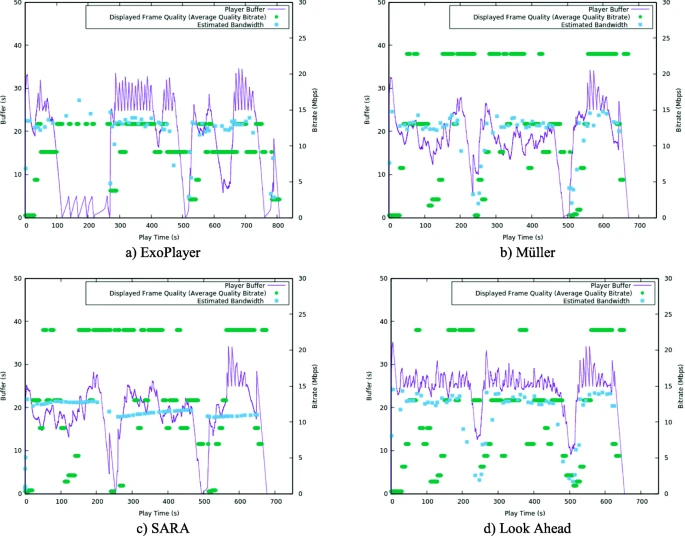Look ahead to improve QoE in DASH streaming
When a video is encoded with constant quality, the resulting bitstream will have variable bitrate due to the inherent nature of the video encoding process. This paper proposes a video Adaptive Bitrate Streaming (ABR) algorithm, called Look Ahead, which takes into account this bitrate variability in order to calculate, in real time, the appropriate quality level that minimizes the number of interruptions during the playback. The algorithm is based on the Dynamic Adaptive Streaming over HTTP (DASH) standard for on-demand video services. In fact, it has been implemented and integrated into ExoPlayer v2, the latest version of the library developed by Google to play DASH contents. The proposed algorithm is compared to the Müller and Segment Aware Rate Adaptation (SARA) algorithms as well as to the default ABR algorithm integrated into ExoPlayer. The comparison is carried out by using the most relevant parameters that affect the Quality of Experience (QoE) in video playback services, that is, number and duration of stalls, average quality of the video playback and number of representation switches. These parameters can be combined to define a QoE model. In this sense, this paper also proposes two new QoE models for the evaluation of ABR algorithms. One of them considers the bitrate of every segment of each representation, and the second is based on VMAF (Video Multimethod Assessment Fusion), a Video Quality Assessment (VQA) method developed by Netflix. The evaluations presented in the paper reflect: first, that Look Ahead outperforms the Müller, SARA and the ExoPlayer ABR algorithms in terms of number and duration of video playback stalls, with hardly decreasing the average video quality; and second, that the two QoE models proposed are more accurate than other similar models existing in the literature.

If you want to know more about this topic, see the original article.






